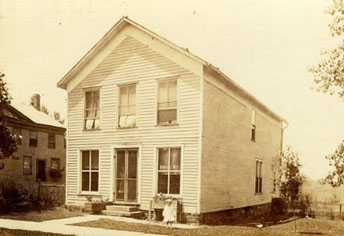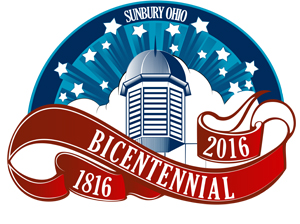| From The Sunbury News, July 21, 2016: |
|
||||||
| Because You Asked . . . . | |||||||
|
Early Sunbury Mills and
|
|||||||
|
By Polly Horn, Curator of the Myers Inn Museum |
|||||||
| Gaylord Mill There were three
mills along the Big Walnut near Sunbury. Sunbury's first mill was
built at the juncture of Big Walnut Creek and Rattlesnake Creek on
Granville Road (Rt. 37 today) by Nicholas Manville in 1810. The
mill passed to Major Strong in 1817 then to Eleazor Gaylord in 1825
and became know as the Gaylord Mill. It did not last a long
time. Years later Billy Southworth collected stones from the creek
bed and built his stone house on Gaylord Hill. |
|||||||
|
|
|||||||
|
Fleckner Quarry, in 'Picturesque Sunbury," 1896, photo by Charles Perfect |
|||||||
"Burrer Quarry Became Flectner Quarry In 1851, the year Johan Burrer bought his family to Sunbury, he made a stone purchase from John Knox in the same area as the Baily Mill. He was a good stone cutter and eventually took in a partner Henry Fleckner so Burrer could build a bakery, store and tavern on the lot next to the Myers Inn. The stone from his underground refrigeration system is in the fireplace in the Myers Inn Museum. Van Sickle Mill Becomes Burrer Mill John Van Sickle built a third mill in 1845 with a brush dam
across the Big Walnut and about one half mile northeast of Sunbury.
Eventually the brush dam was replaced with planks and the mill sold
to E. M. Condit who operated it from 1855 to 1866 then he sold it to
Jacob Boyd. Jacob sold the mill to his brother. When Boyd sold the
mill to Johan and his son Gottleb Jacob Burrer, F. B. Sprague, a
Justice of the Peace, certified the Burrer-Boyd purchase agreement
on June 16, 1871. Sprague had expertise in the milling business and
bought in as a partner with the Burrer father and son. |
|||||||
| John E. Burrer had shown
more interest in the bakery than in the mill. He married Margaret
Hyatt and took over the bakery and the store next to the Myers Inn
when his father died. They moved into the quarters over the bakery
and had three children: Esther (born 1894), Arthur Merlon (born
1896) and Frank (born 1898). John E. sold the bakery and lot in 1899 to J. W. Barker. who ran it until he sold it in 1906 to Chauncey Root who came from Pickaway County. Root sold the bakery and lot in 1819 to Robert Gelston. |
 |
||||||
|
Burrer, Barker, Root, then Gelston Bakery 1918 |
|||||||
| John E. bought a flour and grist mill in
Centerburg and moved his family there where he had two more children
George in 1902 and Ralph in 1909. |
|||||||
| Nannie married Thomas Payne, a hardware
merchant in Sunbury. Kidwells, Perrys, Kitchens, Watsons, Hobbs,
Amerine, Hoffs and Owens are just some the their descendantsí
surnames. Frank never married but lived with his mother and helped in the mill. After her death, he moved to Westerville and started his own mill. When Sprague became Probate Judge in 1875 after being Justice of the Peace, he lost interest in the milling business. By 1875 young Jakie Burrer was the sole owner of the mill but his 13 year old brother Frank continued to help with the business. While the Burrer Mill was not the first in Sunbury, it would become the longest running mill. |
|||||||
|
. . . . And Now You Know |
|||||||
| Bibliography: Burrer, Dorothy Dillenbeck. Flashback the Story of Two Families. As told to Polly Whitney Brehm Horn. Available in Community Library |
|||||||
|
Follow the
Burrer Mill Story Return to Local History Index Return to Bicentennial Highlights Return to Home |
(1/14/2016) | ||||||

